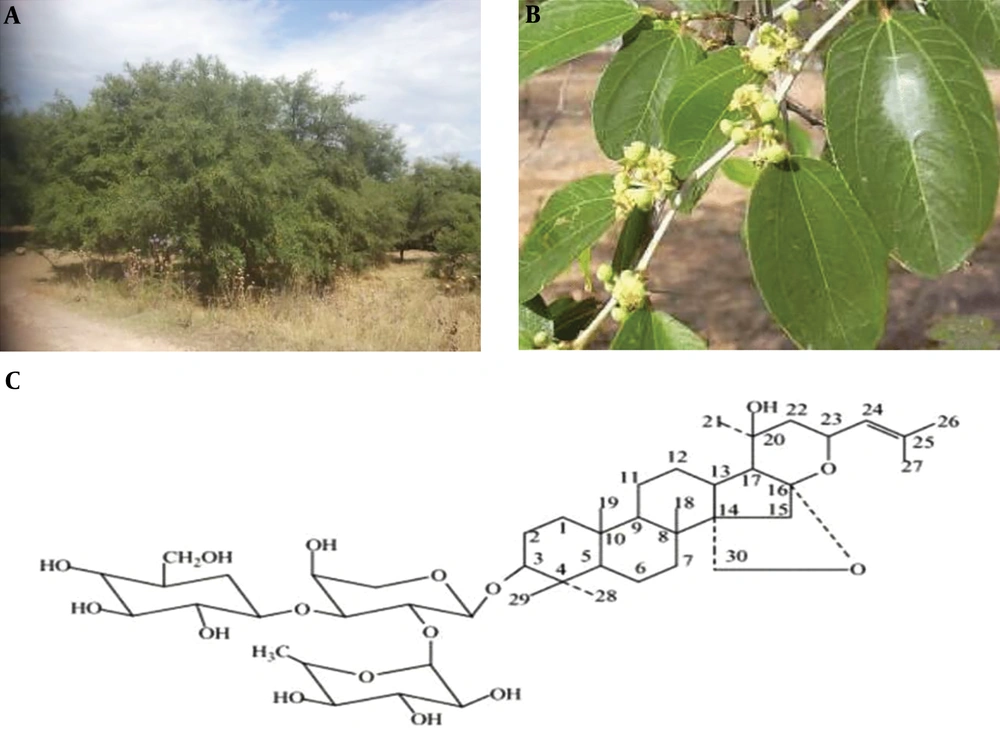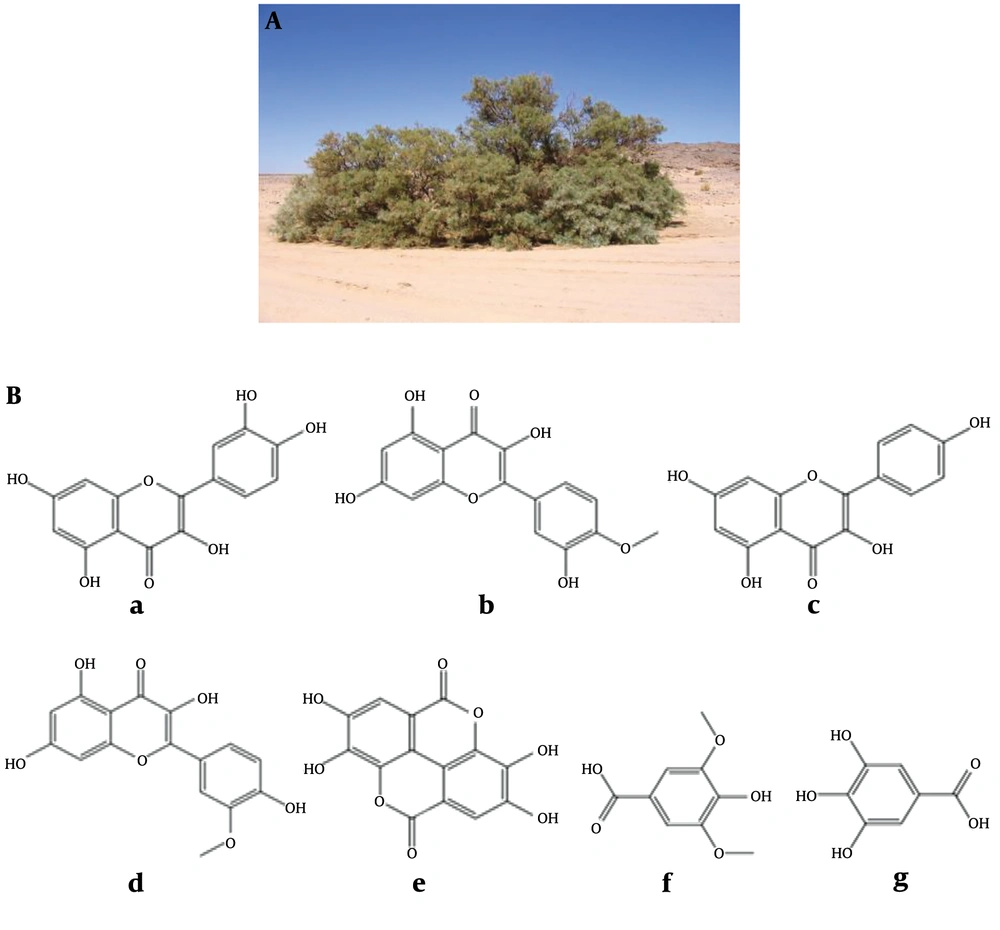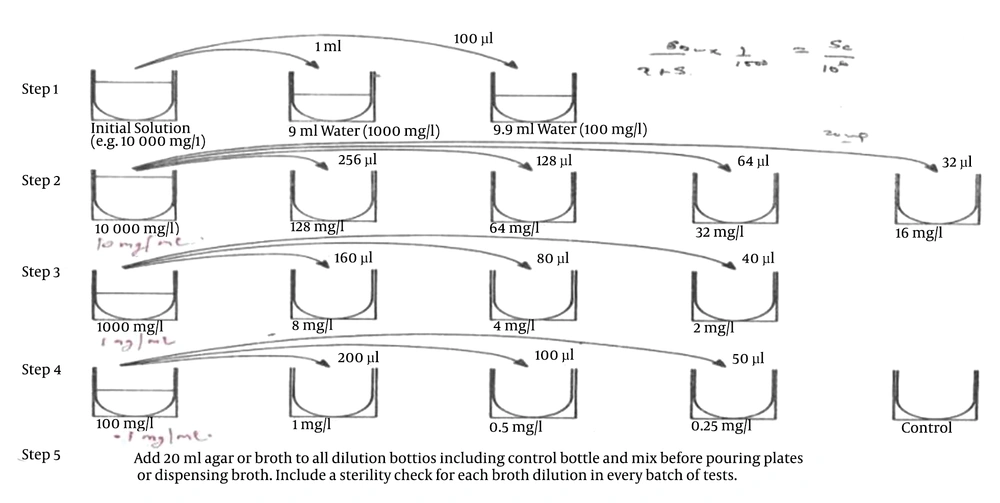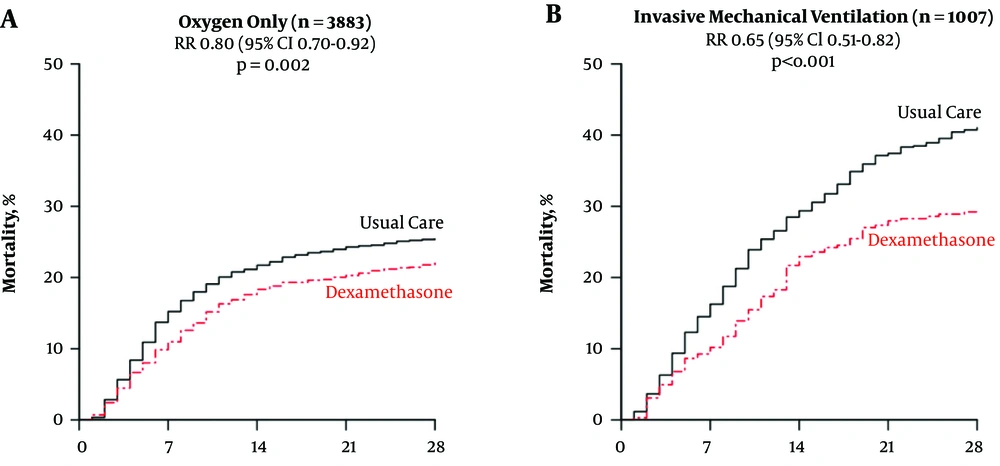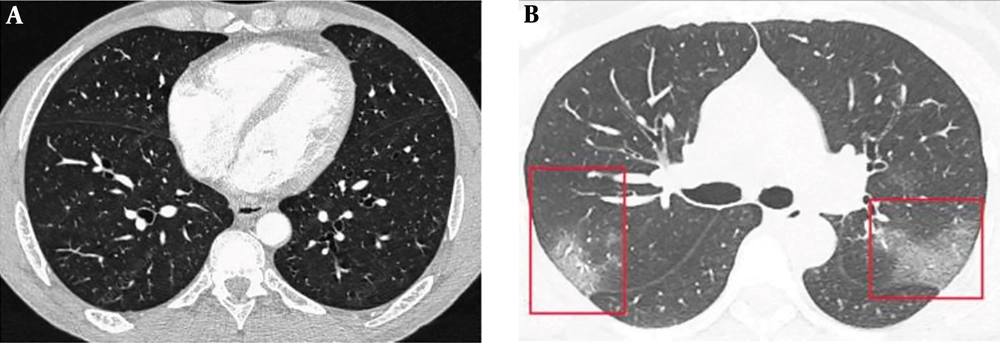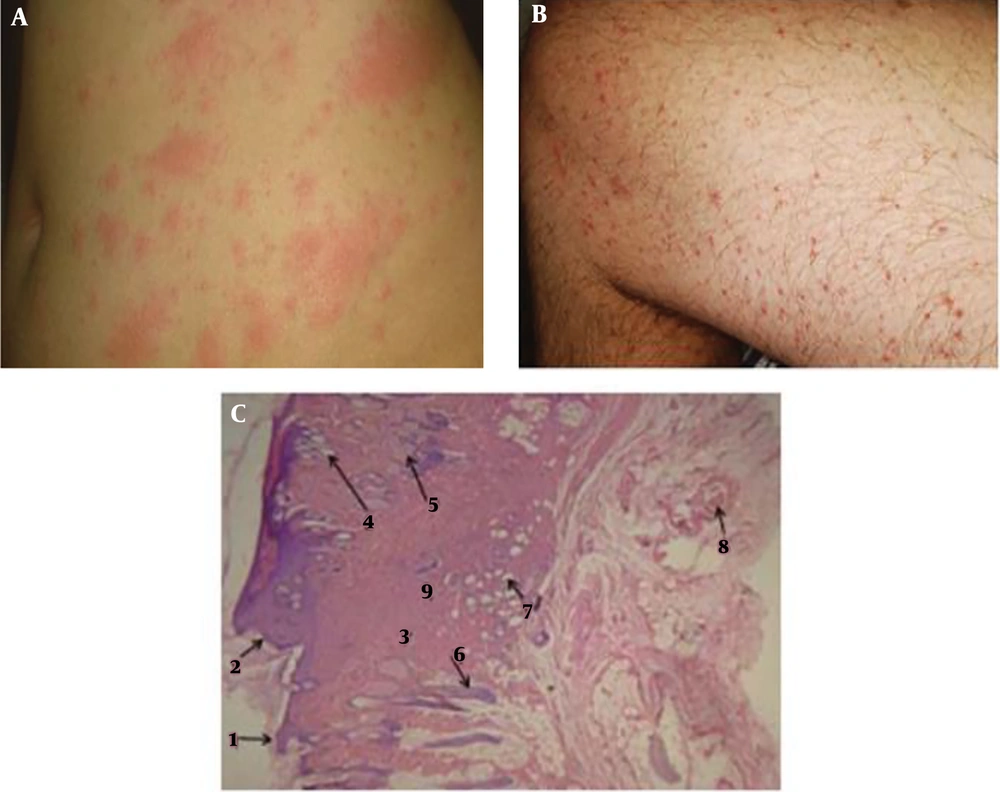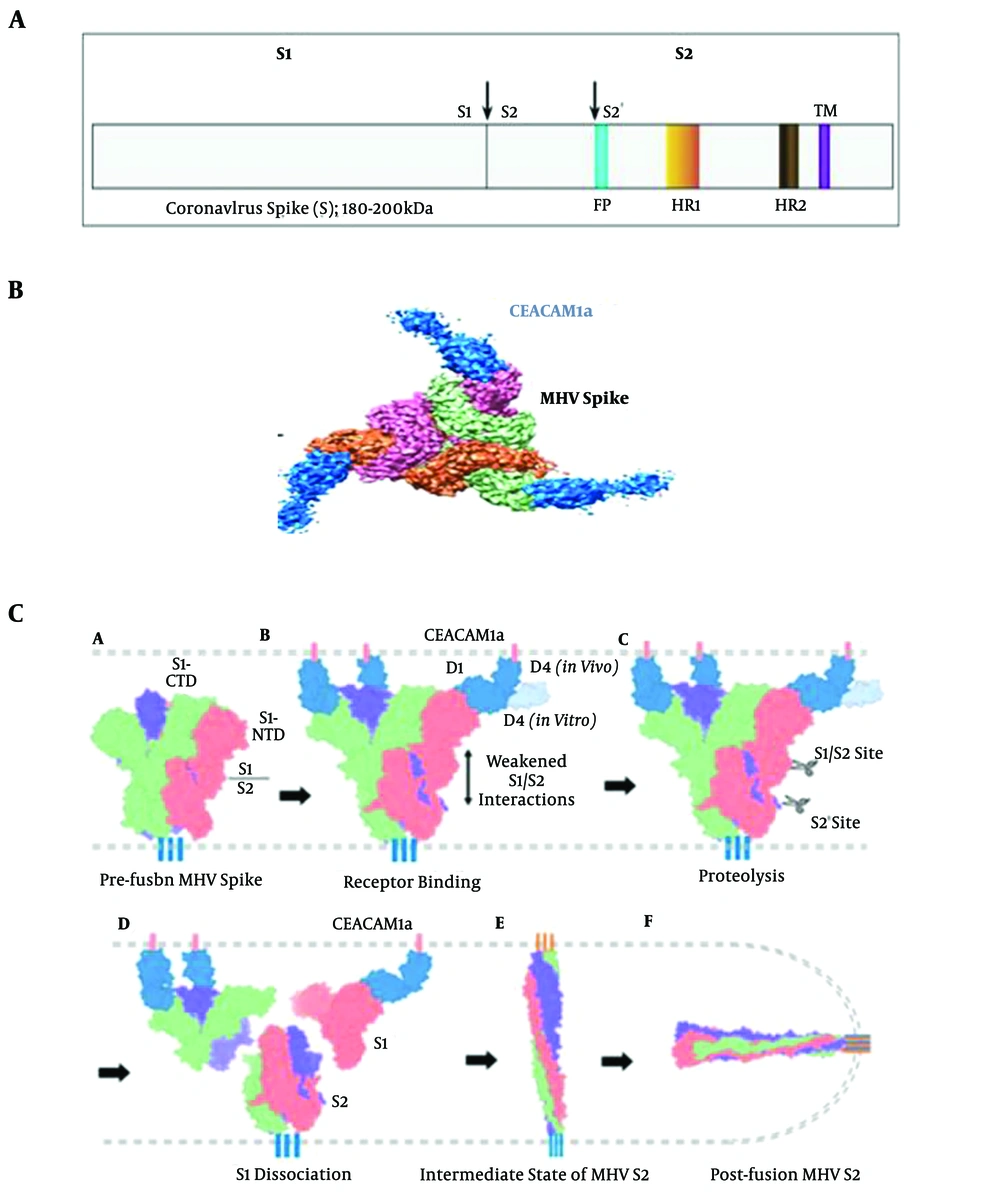1. Background
Everlasting verses in the Holy Quran mention a metal such as copper (12th Ayat of Surah Saba, English Translation of The Holy Quran by Shakir) and give some information about the vital importance of plants such as Tamarix and lote-trees (in English Ziziphus spina-christi) where it is said that “… But they turned aside, so we sent upon them a torrent of which the rush could not be withstood, and in place of their two gardens We gave to them two gardens yielding bitter fruit and (growing) tamarisk and a few lote-trees” (16th Ayat of Surah Saba, English Translation of The Holy Quran by Shakir). Indeed, they will provide impressive guidelines for people of different ages. Regarding various traditions, especially in the Bible (The Gospel according to Matthew. Jesus’ crown of thorns; 27:29), Ziziphus spina-christi as a considerable plant called Jesus’ crown of thorns with due regard for its medical treatment. Some effective properties show the importance of this useful plant, as we discuss here.
Diseases everywhere accompany life. Reliance and permanence of animal and human life have been defined through using plants as shelter and food. Their importance to alleviating and controlling diseases in medicine is further highlighted as trustworthy practice (1). Nearly half of the deaths in the world are caused by infectious diseases. An acute respiratory infection is an infection probably interfering with normal breathing. Respiratory diseases, or lung diseases, are pathological conditions affecting the organs including the lower respiratory system starting from vocal cords and ending in the lungs. Different types of respiratory diseases exist from mild diseases, like the common cold, to severe diseases threatening life like bacterial pneumonia and lung cancer. Older adults, children, and people with weak immune systems are dangerously susceptible to this infection, as they are more affected by the viruses.
Pneumonia is an inflammatory condition inflaming the air sacs in one of the lungs or both. It happens by a breakdown in the natural defenses of the body and allows germs to multiply and invade the lungs. The air sacs in the lungs are filled with fungi and bacteria and the pus or fluid of such bacteria (purulent material) can cause cough, phlegm, chills, fever, and difficulty in breathing in patients. Pneumonia is caused by various organisms such as bacteria, fungi, and viruses. Typically, dry cough, chest pain, fever, body aches, fatigue, fever over 103°F (39°C), and difficulty in breathing are the leading symptoms of acute respiratory infection.
Concerning different treatments for bacterial diseases, a superb option could be the herbs’ chemical components with fewer side effects compared to synthetic antibiotics. There are many natural compounds in nature. Ziziphus spina-christi (ZSC) is among the important plants in the traditional medicine of Iran (2). As seen in Figure 1A, Ziziphus spina-christi is a shrub and an evergreen tree. In terms of phytochemical and antibacterial analysis, water and ethanol extracts of Ziziphus spina-christi leaves were tested. It has simple, broad leaves with three noticeable basal veins of 2 cm to 7 cm in length (0.79 to 2.76 inches). Some species of this plant are deciduous and others are evergreen (Figure 1B).
The phytochemical screening shows that the extract of leaves contains flavonoids, alkaloids, saponins, lipids, proteins, and free sugar as the dominant chemical composition in this plant. Figure 1C represents the main Z. spina-christi leaves’ components. Plant materials significantly lead to improving human health by the prevention of diseases. Sider (Z. spina-christi) leaves’ extracts were more significantly effective against some bacterial species, especially Pseudomonas species that most often cause infections in the lungs (pneumonia). The current research was aimed at assessing the antibacterial and antimicrobial activity of methanolic and ethanolic extracts of sider (Z. spina-christi) leaves as a treatment for respiratory disorders, especially those caused by coronaviruses. Coronaviruses are positive-stranded, large RNA, enveloped viruses infecting numerous avian and mammalian species, meanwhile capable of causing gastrointestinal and respiratory diseases (3, 4).
Anti-inflammatory, antipyretic, and analgesic effects of Tamarix aphylla ethanolic extract constitute another aspect of our study. Tamarix aphylla is an evergreen tree growing up to 18 m in height, seen across Central, East, and North Africa, and some parts of Western and Southern Asia (Figure 2A). The species has a variety of common names, including Athel tree, Athel tamarisk, saltcedar, and Ghaz (local name).
Ethnopharmacological relevance shows that medicinal plants have been utilized for the treatment of human ailments for thousands of years. Tamarix aphylla is a beneficial medicinal plant. The largest identified Tamarix aphylla belonging to the Tamaricaceae family was used as a significant and traditional healing plant to treat various complaints (5). Tamarix bounds different infective diseases from common cold and cough to severe infections like smallpox and tuberculosis, as well as dental infections. Regarding the pathogenesis of several diseases, inflammation is a common stage contributing to. Polyphenolic compounds as the key class of phytochemicals are considered with anti-inflammatory, antioxidant, and antimicrobial features. Polyphenols as secondary metabolites in Tamarix spp. have anti-inflammatory features (6, 7).
2. Objectives
The secondary metabolites such as flavonoids and alkaloids are extracted from various medicinal plants. The antibacterial activities and antimicrobial potency of this plant were evaluated by extracting flavonoids and alkaloids. The most important phytochemicals of Tamarix spp. are shown in Figure 2B.
3. Methods
3.1. Collection and Preparation of Plant Materials
3.1.1. Extraction
Z. spina-christi: The leaves of the Z. spina-christi (sider) were collected and dried for three days at room temperature. Then, using an electric blender, leaves were crushed into powder. Methanol extraction was performed by adding 10 g of Z. spina-christi (sider) powder to 100 mL of ethanol-distilled water and centrifuged at 3,000 rpm for 15 min. Next, the supernatant was collected. By three-time repeating the above process and ultimately incubating at room temperature for 48 h, ethanol was removed through evaporation. As a result, flavonoids and alkaloids were extracted from methanol and ethanol, respectively (8).
According to our research, the antibacterial activity of Z. spina-christi leaves’ extract (methanolic and ethanolic) with known antibiotic discs was an important issue considered the collection of plant materials carefully (9).
Also, the antimicrobial properties of methanolic and ethanolic extracts of both plants by using the disc diffusion method were tested. Then the undiluted neat solution (100 mg/mL = 10,000 mg/L), at concentrations of 128, 100, 64, 32, and 16 mg/L were evaluated. Furthermore, the inhibition zone diameter (mm) for each disc was measured by a ruler. To this end, five sterile test tubes were selected to accomplish the procedure. In step 1, the first test tube was filled up with 9.9 mL of distilled water and 100 µL of Ziziphus spina-christi leave extraction neat solution (100 mg/L). After that, 20 mL of distilled water was used in the second, third, fourth, and fifth tubes. It is noticeable that water was an integral part of making any dilution of the original solution. Then, 256 µL of the neat solution was added to the second tube (128 mg/L), 128 µL to the third tube (64 mg/L), 64 µL to the fourth tube (32 mg/L), and 32 µL to the fifth tube (16 mg/L), as represented in Figure 3. Through the mentioned process, ethanolic and methanolic dilutions were evaluated. A broadly-based method for preparation of Ziziphus spina-christi leaves’ extract confined in terms of undiluted neat solution (100 mg/mL = 10,000 mg/L), prepared at concentrations of 128, 100, 64, 32, and 16 mg/L to evaluate the antibacterial activities of the plant using the disc diffusion method (9).
Tamarix aphylla: The smoke extract of this plant affects all bacteria. To obtain smoke extract and through heating indirectly in a sealed vessel containing a proper amount of oxygen, 50 g of the dried herb was burned completely. On the next step, using a vacuum pump, the smoke was collected and inserted into a chamber with one liter of distilled water. To mix the smoke and water, the chamber was placed onto a shaker for 1 h. The smoke extract was then attained at a 50 mg/L concentration. The maximum effect of water and ethanol extracts of Tamarix aphylla was observed against S. pneumonia bacteria with an inhibition zone of 3.3 mm diameter (5).
Solvent extracts of dry and fresh Tamarix aphylla leave present antimicrobial activities against any of the microbes tested. By using an electric grinder, the dried leaves and stem of T. aphylla were ground. To obtain the best result and with regular shaking to dissolve the bioactive compounds, the plant material was soaked in methanol for seven to eight days. In the usual manner of drying under decreased pressure and utilizing a rotary evaporator, the procedure was repeated three times. In the end, the extract was transferred to another funnel filled with 60 - 80 mL of distilled water. A given amount of n-hexane was added, shaken, and left to stand for 10 - 15 min. The extraction approaches could produce great antimicrobial impacts on examined pathogenic microbes by utilizing nonpolar and polar solvents of T. aphylla leaves (10).
By disc diffusion testing and detailed analysis of Bakht et al., the antibacterial effects were characterized. This test used sterile forceps to place three 6-mm filter paper discs in Petri dishes. To make various concentrations of plant extract, a stock solution was prepared by dissolving 0.5 and 1 mg in 6 µL and 12 µL volumes.
After the inoculation process, inoculated plates were incubated for 24 h at 37°C. Inoculum preparation induced the bacterial growth inhibition on plates and we measured the diameter of each zone of inhibition (ZI) in millimeters. By using a rotatory evaporator, Ziziphus spina-christi and Tamarix aphylla leaves᾽ extracts (6, 9) were filtered and evaporated to dryness. Based on the following test, the resulting extract was weighed and the percentage yield was estimated (11):
Percentage yield = mass of extract × 100/Mass sample taken
It’s worth mentioning that the resulting extract revealed the presence of saponins, alkaloids, flavonoids, and tannins in the various compounds as described in the following testing:
Testing for Saponins: To improve the presence of saponins, 0.5 g of the extract was taken in 5 mL of distilled water and filtered. Then, we added 0.01 g of NaHCO3, followed by shaking to make a persistent foam indicating the presence of saponins (6).
Testing for Alkaloids: To do this, about 0.05 g of the extract was dissolved in 10 mL of dilute HCl. The following step to filter the extract was carried out by adding some drops of the Mayers reagent to the solution. White or creamy substances approved the presence of alkaloids (6).
Testing for Flavonoids (Alkaline Reagent Test): To achieve the result, 0.2 g of crude extract was taken in dilute NaOH with some drops of diluted HCl. A colorless solution pointed to the presence of flavonoids (6).
Testing for Tannins: About 0.5 g of the extract was dissolved in 1 mL of distilled water, and then by adding 1 - 2 drops of 5% ferric chloride to the solution, the blue or greenish-black color was observed (6).
4. Results
4.1. Medicinal Influences of Ziziphus spina-christi
Herbal medicines with their cultural acceptability accompanied by the least injurious effects are being widely used in the world. Additionally, pharmacological activities related to Ziziphus spina-christi and its methanolic and ethanolic extract capable of preventing the growth of different species of Gram-negative bacteria are vital for drug development (5, 8). Regarding another activity, the wound healing properties of Ziziphus spina-christi are due to its phenolic compounds. As an important group of phytochemicals and their biological aspects like antimicrobial, anti-inflammatory, and antioxidant properties, it can be said that polyphenolic compounds play strong and effective roles in this plant (3, 12). Therefore, the existence of tannins, alkaloids, and saponins in ethanol and water extracts of the leaves of this medicinal plant is considered in the phytochemical analysis.
Anti-inflammatory properties of Ziziphus spina-christi (9) sheds light on a variety of usual treatments in patients with COVID-19, in which case a controlled and adaptive trial defined as The randomized evaluation of COVID-19 therapy (RECOVERY). This trial was supported by the National Institute for Health Research Clinical Research Network carried out at 176 National Health Service (NHS) hospital organizations in the United Kingdom. A serious injury to inflammatory organs happens in severe COVID-19 and the preliminary results represented the effect of dexamethasone 6 mg for 10 days Furthermore, after the onset of inflammatory lung damage, it leads to a significant mortality rate reduction in patients with COVID-19. As Figure 4A and B illustrates, a shorter duration of hospitalization was linked to the allocation of dexamethasone within 28-day that the reduction in mortality characterized by 35% in patients who got oxygen with mechanical ventilation and by 20% in patients who got oxygen without invasive mechanical ventilation (13).
Based on the study findings on the aqueous extract of Ziziphus spina-christi, the root bark possesses a considerable central analgesic activity. Moreover, the bioactive principle of Z. spina-christi in treating stomach pains is due to the direct stimulation of pain sensation. Analgesia in the two phases of formalin-prompted noxious stimuli played a remarkable role in the first phase of formalin and also in the second phase of inflammation that determined by stimulating the pain sensation directly, which exhibited a noteworthy acetic acid-caused suppression of abdominal constriction. The first phase lasts 10 - 15 min and the second phase lasts 10 - 60 min. Then, the acute reflex to heat and noxious mechanical stimuli were found (P < 0.05) (14). The extract impact in the formalin test resulted in a considerable inhibition of the formalin noxious stimulation in both early and late pain phases. The presence of saponins, alkaloids, flavonoids, and tannins is shown in Table 1 through the phytochemical analysis of Ziziphus spina-christi leaves’ ethanol extract (11). The presence of saponins, alkaloids, flavonoids, and tannins is shown in Table 2 through the phytochemical analysis of Ziziphus spina-christi leaves’ water extract.
| Phytochemical | Leave |
|---|---|
| Alkaloids | ++ |
| Tannins | ++ |
| Saponins | ++ |
| Flavonoids | ++ |
Phytochemical Analysis of Ziziphus spina-christi Leaves’ Water Extracts
Alkaloids: They have well known antibacterial and antifungal effects on microorganisms.
Saponins: Saponins are glucosides with foaming characteristics. Saponins are one of the numerous and diverse classes of plant natural products. Saponins serve as antibacterial agents. To lower the level of glucagon which acts as a hormone for mobilization of glucose into the bloodstream, a natural product in this plant named saponin glycoside is responsible. Lowering the level of blood glucose in an indirect pathway and exerting effects against cancer, hypotension, and inflammation are the direct results of this phenomenon (15). Therefore, increasing the cell membrane permeability to kill a microbe may contribute to the potential effect of saponins.
Tannins: The use of the plant in ethnobotanical medicine should be discussed regarding the presence of tannins in this plant. To form stable water-insoluble components, tannin compounds can react with proteins. The bacteria cell wall is made up of proteins. Through precipitating protein components, tannins behave as detoxifying agents by inhibiting their growth (16). The major act of tannins for destroying the microbe is through binding to iron and a marked inhibition of the metabolism inside the microbe that helps eliminate it. To ascertain the phenolic compounds of Tamarix aphylla (6), their importance was revealed, as shown in Table 3. Also, the existence of tannins as the main active compounds defines an astringent property for Tamarix aphylla in traditional medicine. As a result of testing kits shortage, CT scan results play a significant role in conducting any decision-making toward diagnosing infections. In the lung CT scan, normal lungs appear dark gray and black (Figure 5A). The abnormality contributes to white areas of the lungs, as seen in patients suffering from COVID-19 (Figure 5B). This common occurrence in the lungs indicates the partial filling of air spaces, leading to difficulty breathing or shortness of breath.
| Plant Part | Solvents | Saponins | Tannins | Alkaloids | Flavonoids |
|---|---|---|---|---|---|
| Leaves | Water | + | + | - | + |
| n-Butanol | +++ | +++ | ++ | ++ | |
| n-Hexane | ++ | ++ | + | + | |
| Ethyl-acetate | +++ | +++ | + | ++ | |
| Stem | Water | + | + | - | + |
| n-Butanol | +++ | +++ | ++ | ++ | |
| n-Hexane | ++ | ++ | + | + | |
| Ethyl-acetate | +++ | +++ | + | ++ |
Phytochemical Analysis of Tamarix aphylla Leaves’ Extractsa
Additionally, “as a life-threatening disorder, medical records indicate blood clots in the lung of COVID-19 sufferers that eventually leads to death”, said an Iranian doctor named Dr. Abdolreza Fazel, Head of Golestan University of Medical Sciences, Iran (17). On the other hand, the process of cell division can be affected by alkaloids that are bound to DNA. Also, flavonoids bind to DNA and RNA, resulting in impaired energy metabolism that causes the weakening of growth of the microbe, affecting protein inhibition and fat formation, respectively. The plant is used as a treatment for diarrhea and colon cramps. Generally, secondary metabolites can cause medicinal plants’ main antimicrobial activities.
5. Discussion
5.1. SARS-CoV-2 Origin and Transmission and Antiviral Effect of Cu
Several research groups recognized that SARS-CoV-2 has a similar genome to bat coronavirus, and it belongs to the β-coronavirus family (positive-sense, enveloped, and single-stranded RNA viruses of zoonotic origin), referring to bats as natural hosts. The SARS-CoV-2 RBD (receptor binding domain) is like the SARS-CoV RBD, and angiotensin-converting enzyme 2 (ACE2) is recognized as a key SARS-CoV receptor that protects the lung from injury (18). Using the same receptor, ACE2, the novel coronavirus increasingly spreads through the respiratory tract, continuing the transmission from human to human. Initially, in a DNA sequence, the candidate protein-coding area or functional RNA-coding area is recognized by ORFs (open reading frames).
Sixteen NSPs (non-structure proteins) are encoded by 2 - 3 viral RNA in the first open reading frame (ORF 1a/b). The encoding of four essential structural proteins such as matrix (M), spike (S), glycoprotein, nucleocapsid (N) proteins, together with small envelope (E) protein, as well as various accessory proteins in the rest part of the virus genome, shows that through binding of S glycoprotein of SARS-CoV-2 to host cell receptors, a vital phase is initiated for virus entry, indicating the role of ACE2. Lower respiratory tract infections are the leading causes of death among all infectious diseases that are normally more serious compared to upper respiratory infections. Susceptibility to infection is characterized in two categories of individuals including people with underlying diseases and the elderly (19, 20).
Affecting various organ systems in the human body by COVID-19 including the skin draws our attention to this important point. As a considerable issue, analyzing various symptoms of COVID-19 shows different rashes appearing on some patients with COVID-19. A study by Spanish doctors confirmed that rashes diagnosed with flat, small, and raised red bumps on the torso as the symptom of the virus are a common phenomenon, such as the spots of chickenpox. Some chilblain-like lesions were found in younger patients with mild infections (Figure 6A). As Figure 6B illustrates, in middle-aged COVID-19 patients, small and itchy blisters on their limbs and trunk are other signs of skin inflammation and disorder (13).
A, Chilblain-like lesions on the trunk; B, Small and Itchy Blisters on the arm. C, Microscopic wound-healing with hydroalcoholic extracts of Ziziphus spina-christi combined with some medical plants after 14 days. 1, Epidermis; 2, hyperplasia refers to the thickening of the endometrium; 3, dermis; 4, hair premature follicle; 5, endocrine glands; 6, hair; 7, fat; 8, vessels; 9, inflammatory cells.
Despite all advances in wound healing, this part of medical treatment remains an important challenging problem. For non-infectious wound healing and due to the presence of tannins, saponins, flavonoids, and alkaloids, as well as antimicrobial, anti-inflammatory, and antioxidant activity of Ziziphus spina-christi in the wound-healing process, the high efficacy of hydroalcoholic extracts of Ziziphus spina-christi combined with some other traditional herbs is under investigation (11).
After inducing wounds, 48 male rats were randomly assigned to six groups. The potential benefits of plants’ extract led to significant healing of the epidermis and dermis layers in 50 experimentally wounded rats. Histopathological evaluation in Figure 6C shows that after this assessment procedure, which was carried out for 7 and 14 consecutive days, the significant improvement of the wound brought combined extract usage into consideration (21).
During viral infection, copper (Cu) plays an important role as a crucial micronutrient for hosts and pathogens. Regarding some immune cells such as B cells known as B lymphocytes, helper T cells, macrophages, and natural killer (NK) cells, Cu results in the functions of these cells. The activity of these blood cells is seriously characterized by the production of special antibodies against pathogens, destroying microbes causing infection, and also causing immune response produced by the direct action of immune cells, like T cells. Copper deficiency in humans is associated with a significant reduction in the number and impaired functionality of blood cells, which leads mainly to an exceptional susceptibility to infectious diseases (22).
Enveloped viruses such as SARS‐CoV‐2 are quickly killed on copper surfaces due largely to the beneficial property of this heavy metal. The adaptive and innate immune response will increase by enriched copper levels of plasma. To analyze the essential effect of Cu in the blood, considering its distribution into plasma with large proteins, a non-exchangeable pool of red cells and a very small amount of copper compounds in low weight has confirmed the fact above. In addition, the common symptoms of copper deficiency in humans usually are involved in immune responses, white blood cell disorders, connective tissue diseases and various abnormalities or deformities of bone. Infants who suffer from disorders genetically and a serious deficiency of copper are in danger of being contaminated by infections. The existence of macrophages during infection is well defined by the high capacity of copper attacking microbes invading the body and also lung infections, and there is a unique pathogen detection array causing elevated copper levels.
The viral genomes consist of DNA and can be destroyed by Cu ions through formation mechanisms and repair of DNA interstrand cross-links. The DNA patterns of microbes can be easily degraded on contact-killing surfaces by Cu. The novel coronavirus (SARS-CoV-2) causing COVID-19 is very sensitive to the copper surface. In a cell-based method, Cu2+ is responsible for the inhibition of papain-like protease of SARS-CoV-2, a necessary protein for coronavirus replication. Thus, the effect of copper supplementation gives protection against COVID-19. According to an analysis carried out by Weiner, some biological activities for Tamarix aphylla included anti-inflammatory activities (because of steroids), antiseptic activities (because of saponins), and a regulatory role of antioxidant vitamin in the immune responses have been described respectively. The mentioned issue clearly defines the presence of copper as heavy metal in this medical plant. In addition, one of the main objectives of this study was to assess the concentration of Cu in the extracts of Ziziphus spina-christi and Tamarix aphylla through atomic absorption spectroscopy, which revealed their importance as a medicinal plant in herbal supplements (23, 24).
5.2. Structure of Spike Protein of Coronavirus
5.2.1. Involving with Receptor Mechanism for Viral Entry
Middle East respiratory syndrome coronavirus (MERS-CoV) is a recently arisen virus causing severe respiratory tract infection. The extensive distribution of CoVs in nature and epidemic diseases can be made by their zoonotic transmission to humans (12, 25). The spike protein is a big class I transmembrane protein. In addition, various protein-made oligomeric structural subunits are included in the protein shell of a virus, called the capsid. The capsid proteins co-assemble with their genomes in some viruses such as viruses with helical capsids, particularly those with RNA genomes. By this entry, translocating the viral DNA into the capsid is performed. In general terms, it would be said that these viruses are replicated after entering the respiratory tract and infect lumenal epithelial and macrophages cells (26). To shape the special appearance of corona in crown, spike proteins on the virion surface are assembled into trimmers. The same organization of the ectodomain of all spike proteins of CoV in two domains includes an N-terminal domain (named S1) and a C-terminal S2 domain. The S1 domain is responsible for identifying and binding to the host cell receptor and contains the receptor-binding domain. The fusion process of the S2 domain represents the putative fusion peptide (in blue), HR2 (in brown), and orang area, which is related to heptad repeat HR1 (18). Also, the purple area shows the transmembrane domain. The cleavage sites are represented by the arrows (Figure 7A).
Considering SARS-CoV as an example, the S protein of SARS-CoV essentially contributes to viral pathogenesis and infection (20). The envelope-anchored spike protein of coronavirus has many receptors. The contribution of receptor binding to the coronavirus entry to host cells is basically and fundamentally described in virology. To analyze the receptor-bound S1-NTD structures and coronavirus’s unliganded S1-NTD, similarly, a fusion peptide (FP), a central helix (CH), and a heptad repeat N region (HR-N) are included in each S2 subunit. The overall obtained results promoted the fact that viral infections, the process of cellular replication and also novel capsid subunits are synthesized via the cell’s protein biosynthesis mechanism.
Also, using the NTD (N-terminal domain) of its spike protein, it binds to a CEACAM1a protein receptor, as a cell adhesion protein (Figure 7B). The coronaviruses’ deserving feature is that they change to identify various receptors such as sugar receptors and protein receptors (18). Within a process with two steps, coronaviruses enter the cells: first, for viral attachment, they realize host cell surface receptors and then fuse the host and viral membranes. The viral attachment step is established by receptors with a vital contribution to the membrane fusion process.
A valuable aspect of receptor binding is declared by a considerable point in regulating mechanisms for transiting coronavirus spikes (25, 27). A C-terminal domain (S1-CTD) and an N-terminal domain (S1-NTD) are included in each S1 subunit of the spike. A virus-based analysis confirmed that an S1 domain or both domains can act as RBD (receptor-binding domain). Using the S1-NTD spike, coronavirus binds to a protein receptor. The S1-CTD is the most extended area over the total spike molecule counting the host immune system. Locating on the side of the spike trimmer, S1-NTD distinguishes sugar receptors significantly; hence, the spike-bound property of CEACAM1a’s direction is perpendicular to the MHV spike (the mouse hepatitis virus). Moreover, viral attachment is defined by the role of S1-CTD in coronavirus entry, making membrane fusion possible (28).
In this present research, insight was provided into the molecular mechanism for the entry of MHV, as well as conformational alterations of MHV spike according to the contribution of receptor binding by S1-NTD. For viral attachment, within MHV entry into host cells, the MHV spike binds to CEACAM1a over the surface of the host cell. One spike can bind three CEACAM1a molecules. Because of the flexible domain hinges of CEACAM1a, it bends to reach S1-NTD on the spike trimmer’s side. The dissociation of S1 from S2 contributes to the receptor-facilitated proteolysis, the conformational changes induced by the receptor, and the receptor’s potential bending. The MHV entry molecular mechanism (29) is demonstrated in Figure 7C. Step (a) shows the virus-surface MHV spike in the pre-fusion mode. The MHV spike-receptor binding causes conformational alterations in the MHV spike and weakens the S1/S2 interactions. Step (b) represents this process. The receptor-MHV spike bound in vitro is perpendicular to the spike while the receptor should bend to reach the receptor-binding sites in the MHV spike in vivo. The blue area shows the host cell-surface CEACAM1a. Step (c) defines the receptor-binding of the MHV spike, which is cleaved through proteases at two sites of S2’ and S1/S2. As shown in step (d), the important role of the receptor is confirmed concerning probable bending of the receptor resulting in tension. The proteolysis of the spike is facilitated by the receptor and then the conformational changes induced by the receptor in the spike facilitate S1 to dissociate from S2. In step (e) is included the MHV spike’s hypothetical intermediate state through numerous former studies. Lastly, in step (f), the transitions of MHV spike to the state after fusion leads to membrane fusion (28).
5.2.2. Spike Protein-based Vaccines
Spike protein is the crucial antigenic component regarding the structural proteins of SARS-CoV. Thus, vaccines based on the role of the spike protein in membrane fusion and receptor binding confirmed a potent force in inducing antibodies to bind or defuse virus infection. The most important features of these plants considering the beneficial effect on inducing the T-cell and antibody-neutralizing responses include protective immunity and drug infection with MHV spikes.
5.3. Conclusions
The contemporary trend in modern science revealed the way to search for the multiple purposes of medicinal plants. Since numerous synthetic drugs are toxic potentially, medicinal plants have attracted a huge deal of attention. Traditional use and considerable importance of plants and herbal products as natural remedies for various diseases demonstrated the process of the present study. Moreover, different investigations have attempted to assess the antimicrobial and antibacterial impacts of Tamarix aphylla and Ziziphus spina-christi, which proved that the methanolic and ethanolic extract of these plants' leaves contains phytochemical constituents like flavonoids, alkaloids, tannins, and some major bioactive compounds as secondary metabolites. They provide defense mechanisms to inhibit the growth of microorganisms. Coronaviruses characteristically enter the cells of humans through binding their glycoproteins to proteins on the cell surface. For these viruses, the vital importance of the viral spike (S) proteins in cell entry programs is characterized by binding cellular receptors, as well as mediating the fusion between the virus and cell membrane. A C-terminal domain switches between two conformations for coronaviruses with C-terminal domain function as the receptor-binding domain including SARS coronavirus and MERS coronavirus. First, the structure of C-terminal domain in each S1 subunit of the spike in the standing-up conformation is stabilized by the receptor binding and then it weakens the S1/S2 interactions and facilitates the dissociation of S1 from S2. The variable spike proteins are reflected in CoV diversity. This issue covers the point that the various forms of protein determined the interactions of the receptor and the response to different activators of fusing cell membrane by the virus differently. Also, the spike protein is selected as a significant target for coronavirus because of its role in membrane fusion and receptor binding. Hence, it can be concluded that it can induce antibodies to hamper virus infection and binding. Additionally, the effective prevention against COVID-19 in terms of Cu antiviral influence has shed light on what improves the function of the immune system in humans that is another important factor in the present study.

